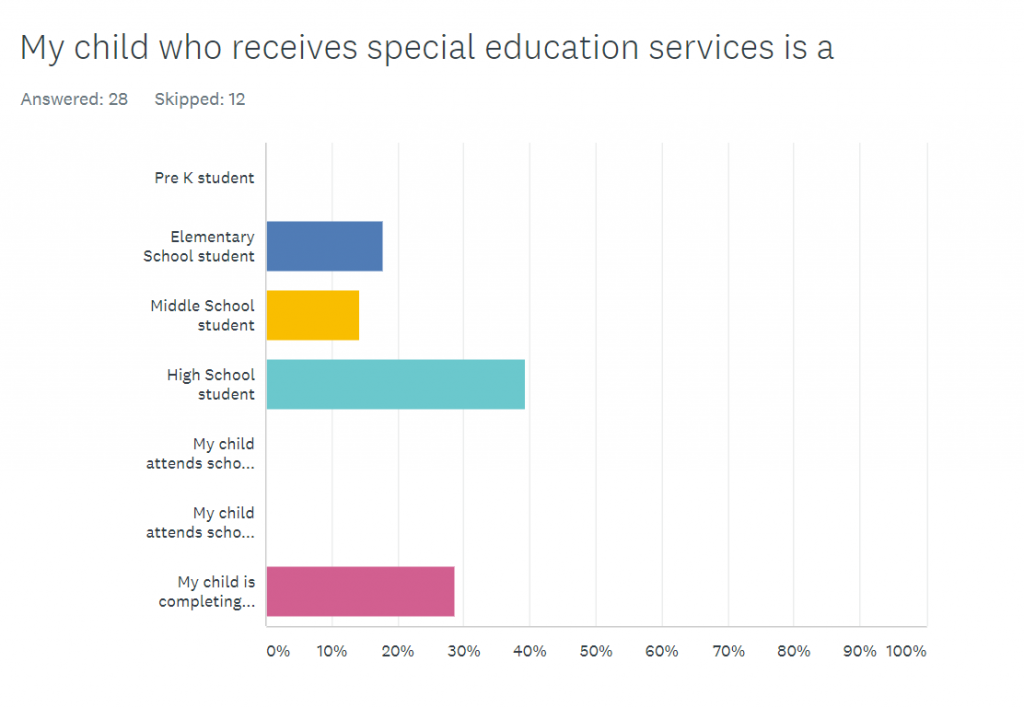
The View So Far

Parent Mentors from 40 Georgia School Districts offered a view of what school looks like from their part of the world.
Just around the time when many school districts were opening their doors (or laptops) parent mentors shared their experiences as a parent relating to their children who have IEPs and as parent mentors in their districts. The charts below offer a quick snapshot.
Editor’s note: this is by no means meant to serve as a scientific survey.

This graph shows that 47 percent of mentors work in the same district their child/ren attend. About 42 percent have children who have aged out of school at age 21 or older.
About 42 percent of mentor’s children are served in a low incidence (self contained) class; 21 percent are in a combination of settings; 18 percent are fully included; and another 18 percent are in co taught classes.


About 60 percent have one child in special education classes. Thirty percent have multiple children in school, with one who receives special education services and the others in general education settings; 12 percent have more than one child who receives special education services.

About 39 percent of mentors students who receive special education services are in high school; 28 percent are super seniors (continuing public education with an IEP post graduation from high school); 17 percent are in elementary school and 14 percent are middle schoolers.

About 76 percent of mentor districts have offered families a combination of distance and on campus learning for the 2020-21 school year; 23 percent serve districts which have opted to open with only distance learning services offered for fall semester; 10 percent have districts with open schools; and 2 percent have offered a hybrid option for families, which range from evening classes to a whole separate program.

 Learning Curve
Learning Curve